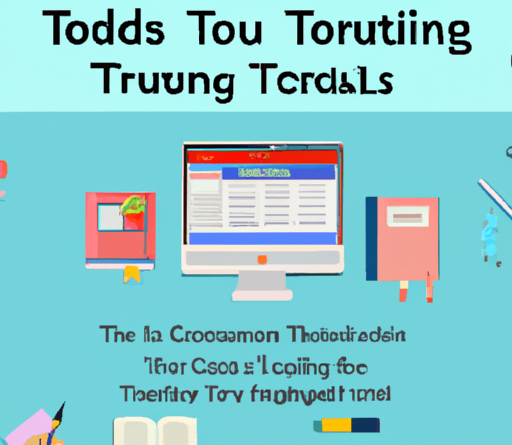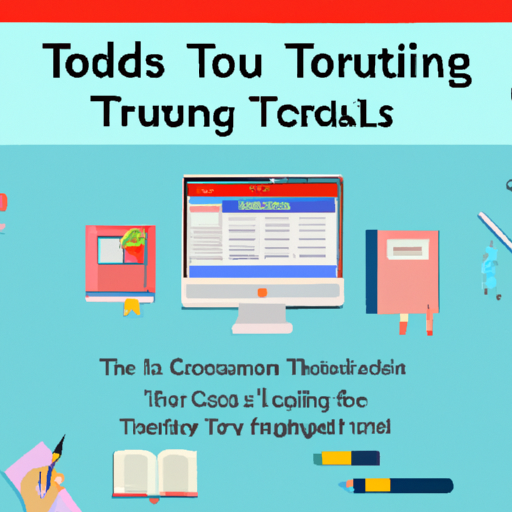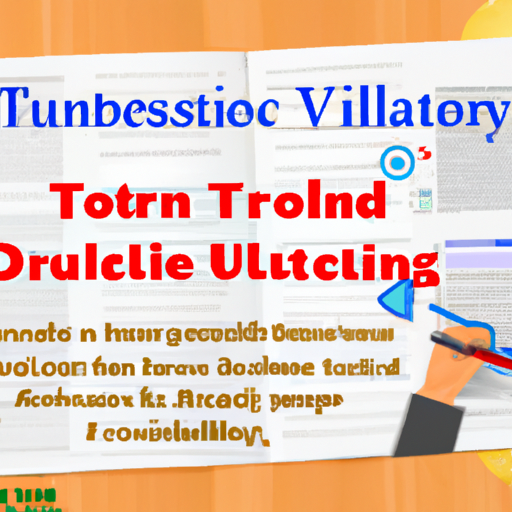
Do you ever find yourself searching for a tutorial on how to do something only to come across ones that are confusing or poorly made? You’re not alone! Creating effective tutorials is an art form that takes practice, but with a few simple tips, you’ll be able to create tutorials that are clear, concise, and easy to follow. In this article, we’ll dive into the world of tutorial creation and explore the different steps and techniques you can use to create tutorials that will be helpful to others. So, whether you’re an expert in a particular field or just want to share your knowledge with others, keep reading to learn how to create tutorials that will leave a lasting impact.
First things first, let’s talk about the importance of planning your tutorial. Before you start recording or writing, it’s crucial to have a clear understanding of the topic you want to cover and the steps you’ll be going through. This will not only help you stay organized but also ensure that you deliver a well-structured and logical tutorial. In addition to planning the content, think about the target audience for your tutorial. Are they beginners, intermediate level learners, or experts? Understanding your audience will help you choose the right tone and level of detail to include in your tutorial. Don’t worry if you’re not sure yet – we’ll delve deeper into this topic later in the article. So, get ready to take your tutorial creation skills to the next level and become a pro in teaching others how to do things!
In the next paragraphs, we will discuss:
- Choosing the right format for your tutorial
- Using clear and concise language
- Incorporating visuals and examples
- Providing step-by-step instructions
- Testing and revising your tutorial
Table of Contents
How to Create Tutorials

Introduction to Tutorials
Tutorials have become an essential resource for individuals seeking to learn new skills or gain knowledge on a particular topic. Whether it’s learning to play a musical instrument, mastering a software program, or understanding complex concepts, tutorials provide a step-by-step guide to help learners achieve their goals. In this article, we will explore the process of creating tutorials and the importance of sharing knowledge with others.
Definition of Tutorials
Tutorials can be defined as instructional guides or lessons that aim to teach a particular skill or subject. These guides are usually presented in a structured format, allowing learners to follow along and learn at their own pace. Tutorials can take various forms, including written guides, video demonstrations, online courses, or interactive tutorials.
Importance of Tutorials
Tutorials play a vital role in the learning process by providing clear instructions and guidance to learners. They offer a structured approach to learning, breaking down complex topics into manageable steps. Tutorials also allow individuals to learn at their own pace, offering flexibility and convenience. Additionally, tutorials promote active learning, as learners are encouraged to actively engage with the material through exercises and practical examples.
Types of Tutorials
There are several types of tutorials, each catering to different learning preferences and objectives. Written tutorials are often text-based and provide a step-by-step guide with accompanying images or screenshots. Video tutorials, on the other hand, offer a visual demonstration of the topic, allowing learners to follow along in real-time. Interactive tutorials provide a hands-on learning experience, where learners can actively engage with the material through exercises and simulations. Choosing the right type of tutorial depends on your target audience and the complexity of the topic.
Planning Your Tutorial
Creating a tutorial requires careful planning and preparation to ensure that your content is effective and engaging. Here are some key steps to consider:
Identify Your Target Audience
Before you start creating your tutorial, it is important to identify your target audience. Understanding who you are creating the tutorial for will help you tailor your content to their specific needs and learning preferences. Consider their existing knowledge and skill level, as well as their motivations for learning the topic.
Set Clear Learning Objectives
Clearly define the learning objectives of your tutorial. What specific skills or knowledge do you want your learners to acquire? Setting clear learning objectives helps you stay focused and ensures that your tutorial provides value to your target audience.
Choose a Relevant Topic
Select a topic that is relevant and in-demand. Research popular topics within your niche and identify areas where there is a knowledge gap or demand for learning resources. Choosing a relevant topic increases the chances of attracting a larger audience and receiving positive feedback from learners.
Creating Engaging Content
Once you have planned your tutorial, it’s time to start creating engaging content that will captivate your audience. Here are some tips to help you create compelling tutorials:
Research and Gather Materials
Start by conducting thorough research on your chosen topic. Gather relevant reference materials, books, online resources, and expert opinions to support your tutorial. This will help ensure that your content is accurate, up-to-date, and provides a comprehensive overview of the subject matter.
Organize Your Content
Organize your content in a logical and structured manner. Break down your tutorial into sections or modules, each focusing on a specific aspect of the topic. Use headings and subheadings to clearly segment your content and guide learners through the learning process.
Use Visuals and Examples
Incorporate visuals, such as images, diagrams, or infographics, to enhance the visual appeal of your tutorial. Visuals help learners grasp complex concepts more easily and make the learning experience more engaging. Additionally, use real-life examples and case studies to illustrate the practical application of the topic.
Break Down Complex Concepts
Complex concepts can be intimidating for learners. Break down these concepts into smaller, more digestible chunks of information. Present the information in a step-by-step manner, ensuring that each step builds upon the previous one. This approach makes the learning process more manageable and increases the chances of learners retaining the information.
Setting Up the Tutorial
Creating a visually appealing and well-structured tutorial is crucial to capturing and retaining the attention of your audience. Consider the following when setting up your tutorial:
Choose an Appropriate Format
Determine the format that works best for your tutorial. If you are creating a written tutorial, choose a readable font and format the text for easy navigation. For video tutorials, ensure that your recording equipment is of good quality, and select an appropriate screen recording software.
Create an Outline or Structure
Create an outline or structure for your tutorial. This outline will serve as a roadmap for your tutorial, guiding you through the creation process. Break your tutorial into sections or modules, and decide on the order in which you will present the content.
Design an Attractive Layout
Pay attention to the visual design of your tutorial. Use consistent formatting, headings, and bullet points to make your content accessible and easy to skim. Incorporate colors, fonts, and graphics that align with your topic and target audience. An attractive layout will make your tutorial more visually appealing and increase its overall impact.

Recording and Editing
If you are creating a video tutorial, the recording and editing process is essential to ensuring a high-quality final product. Follow these steps to create a polished tutorial:
Select the Right Recording Equipment
Invest in high-quality recording equipment to ensure clear visuals and audio. A good microphone, webcam, and screen recording software will help you create a professional-looking tutorial. Test your equipment and settings before recording to avoid any technical issues.
Prepare Your Environment
Choose a quiet and well-lit environment to record your tutorial. Minimize background noise and distractions that could hinder the learning experience. A clean and clutter-free workspace will help maintain focus on the content.
Record Your Tutorial
When recording your tutorial, speak clearly and at a moderate pace. Follow the outline or structure you created earlier to guide the flow of your tutorial. If you make a mistake during recording, pause, and start again from the last correct step. This will make the editing process easier later on.
Edit and Enhance the Video
After recording, edit your video tutorial to enhance its quality and impact. Remove any unnecessary footage or mistakes, and add visual effects, transitions, or captions if needed. Use video editing software to trim, split, and rearrange your footage. A polished and well-edited tutorial will leave a lasting impression on your audience.
Adding Narration and Voiceover
In addition to visuals, adding narration and voiceover to your tutorial can further enhance the learning experience. Here’s how you can incorporate compelling narration:
Write a Script for Narration
Prepare a script for your narration that complements your visuals and guides the learner through the tutorial. Keep your script concise and engaging. Read it aloud to ensure that it flows smoothly and sounds natural when recorded.
Record Clear and Engaging Voiceover
Record your voiceover using a high-quality microphone. Speak clearly and at a steady pace, making sure to enunciate your words. Use appropriate intonation and inflection to maintain the listener’s interest. Listen to the recorded voiceover and make any necessary adjustments to ensure clarity and coherence.
Publishing and Sharing
Once you have created and polished your tutorial, it’s time to share it with the world. Consider the following steps when publishing and sharing your tutorial:
Choose a Platform or Website
Select a platform or website to host your tutorial. Choose a platform that aligns with your tutorial’s format and target audience. Popular options include YouTube, online learning platforms, and your own website or blog.
Optimize Metadata and Descriptions
Optimize your tutorial’s metadata and descriptions to increase its discoverability. Use relevant keywords, tags, and categories to improve search engine optimization. Craft a compelling and accurate description that clearly conveys the value and content of your tutorial.
Promote Your Tutorial
Promote your tutorial through various channels, such as social media, forums, or relevant online communities. Engage with your target audience by answering questions and addressing feedback. Collaborate with influencers or other content creators to reach a wider audience. Promotion is key to ensuring that your tutorial reaches its intended audience and achieves its learning objectives.
Evaluating and Improving
Creating tutorials is an iterative process. Continuous evaluation and improvement are essential to ensure that your tutorials are effective and meet the needs of your audience. Consider the following steps:
Collect Feedback from Viewers
Encourage viewers to provide feedback on your tutorial. Analyze their comments, suggestions, and questions to gain insights into areas that need improvement. Actively engage with your audience by responding to their feedback, reinforcing a sense of community and encouraging further interaction.
Analyze Viewer Engagement
Monitor viewer engagement metrics, such as view count, likes, shares, and comments. This data can provide valuable insights into the effectiveness of your tutorial, allowing you to identify areas of improvement and topics that resonate with your audience. Continuously analyze these metrics to refine your approach and create even better tutorials in the future.
Make Continuous Improvements
Based on the feedback and viewer engagement data, make continuous improvements to your tutorials. Update outdated information, address unanswered questions, and refine your explanations and examples. Embrace a growth mindset and constantly seek ways to enhance your tutorials, ensuring that they remain relevant and valuable to learners.
Conclusion
Creating tutorials is a rewarding endeavor that allows you to share your knowledge and expertise with others. By following the steps outlined in this article, you can create effective and engaging tutorials that resonate with your target audience. Remember, the key to creating successful tutorials lies in careful planning, engaging content creation, and continuous improvement. So, don’t hesitate to start creating tutorials and embark on a journey of knowledge-sharing and empowerment.







